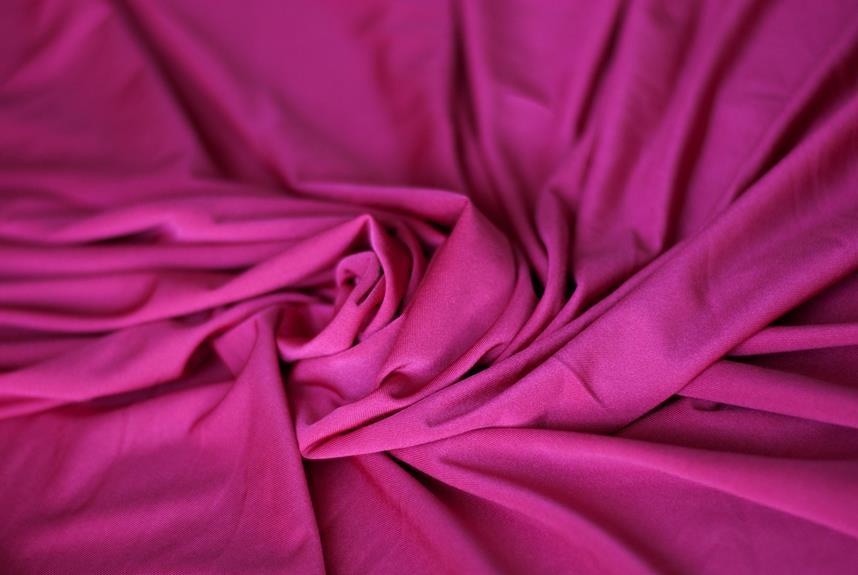When you're selecting fabric for your next project, understanding the differences between batiste and muslin can significantly impact your results. Batiste offers a lightweight, smooth texture that's perfect for those delicate garments you have in mind, while muslin's heavier, coarser nature makes it ideal for mock-ups and practical uses. But what about durability and care? Knowing how each fabric holds up over time could influence your choice. Let's explore these key differences to see which fabric best meets your needs.
Table of Contents
Composition and Material
Batiste and muslin differ significantly in their composition and material, which affects their texture and intended use.
Batiste is typically made from fine cotton or a cotton blend, sometimes incorporating silk or linen for added softness and sheen. This high-quality fabric has a lightweight, smooth finish that makes it perfect for garments like shirts and dresses. It's known for its ability to drape elegantly, giving your creations a refined look.
On the other hand, muslin is crafted from heavier cotton, resulting in a more coarse texture. It's often used as a base or lining fabric, making it ideal for toiles and mock-ups in garment construction. Muslin's durability and breathability make it suitable for various projects, from home décor to quilting.
While both fabrics are versatile, the difference in material means you'll choose batiste when you want something delicate and luxurious, whereas muslin fits the bill for practical, sturdy applications.
Understanding these distinctions helps you select the right fabric for your specific needs, ensuring your projects turn out just the way you envision.
Texture and Weight
When comparing the two fabrics, you'll notice that batiste offers a lighter, more delicate texture, while muslin presents a heavier and coarser feel.
Batiste is made from fine threads, resulting in a smooth finish that drapes beautifully. This lightweight nature makes it a favorite for garments where breathability and comfort are key. You'll find that batiste's soft texture feels gentle against the skin, making it ideal for clothing worn close to the body.
On the other hand, muslin has a more substantial weight, which contributes to its durability. Its slightly rougher texture can be less forgiving, but it still has its charm. Muslin can hold its shape well, which is useful for projects requiring some structure. If you're working with muslin, you'll appreciate its ability to withstand wear and tear, making it a practical choice for various applications.
Ultimately, your choice between batiste and muslin will depend on the specific feel and weight you're after for your project. Whether you need something airy and soft or robust and textured, understanding these differences will guide you in making the right fabric selection.
Common Uses
Both batiste and muslin have distinct common uses that cater to different needs in sewing and crafting projects.
Batiste, known for its lightweight and soft texture, is often used for delicate garments like blouses, lingerie, and baby clothes. When you want a breathable fabric that feels gentle against the skin, batiste is your go-to option. It's also ideal for lining and interfacing, providing a smooth finish without adding bulk.
On the other hand, muslin serves as a versatile fabric in various applications. You might use muslin for making patterns, as it allows you to test garment designs without wasting expensive fabric. Its sturdiness makes it a popular choice for draping and creating prototypes.
Muslin is also commonly used in home décor projects, such as curtains and tablecloths, thanks to its affordability and ease of use.
Durability and Care
Understanding the differences in durability and care between batiste and muslin helps you choose the right fabric for your projects.
Batiste, known for its fine weave, is lightweight and delicate. While it's perfect for garments and baby items, you need to handle it with care. Wash it gently in cold water and avoid harsh detergents to maintain its softness and structure. Line drying is best, as heat can cause it to shrink or lose its shape.
On the other hand, muslin is sturdier and more versatile. It can withstand rougher handling and is often used for toiles and crafts. You can wash muslin in warm water, making care easier. If it wrinkles, you can iron it without worry since it can handle higher heat compared to batiste.
Ultimately, if you're looking for a fabric that'll last through multiple washes and still perform well, muslin's your best bet. If you're after something soft and luxurious for special projects, batiste is ideal, but just be prepared for the extra care it requires.
Choose wisely based on your project's needs!
Cost Comparison
When comparing batiste and muslin, you'll want to consider the cost of materials and how that affects your budget.
Availability and sourcing can also influence pricing, so it's worth checking local options.
Lastly, think about the long-term investment value of each fabric to make the best choice for your needs.
Material Pricing Differences
Batiste generally costs more than muslin due to its finer quality and production process. When you're shopping for fabrics, you'll notice that batiste typically comes with a higher price tag. This is largely because batiste is made from high-quality fibers, often cotton or silk, and it undergoes a meticulous weaving process that results in its soft, lightweight texture.
On the other hand, muslin is usually more affordable. It's made from coarser fibers and is produced using a simpler weaving technique. This makes muslin a popular choice for those on a budget or for projects where cost-effectiveness is a priority.
If you're considering a project, think about how much you're willing to spend. While batiste might be ideal for garments where drape and softness are crucial, muslin serves well for toiles or basic sewing needs.
Ultimately, your choice between the two will depend on your specific requirements, whether that's quality and texture or affordability. Understanding these pricing differences can help you make an informed decision, ensuring you get the right material for your project without overspending.
Availability and Sourcing
Finding batiste and muslin can vary significantly based on where you shop and the suppliers available to you. Generally, batiste tends to be more expensive than muslin due to its finer texture and higher-quality fibers. However, costs can fluctuate depending on factors like location, brand, and type.
When considering availability and sourcing, here are a few key points:
- Local Fabric Stores: You might find a good selection of both fabrics, but prices can be higher due to overhead costs.
- Online Retailers: They often offer competitive prices and a wider variety. Just be mindful of shipping fees, which can affect your total cost.
Ultimately, whether you choose batiste or muslin, it's a good idea to compare prices from multiple sources. This way, you can find the best deal that fits your budget while ensuring you get the quality you need for your projects.
Happy shopping!
Long-term Investment Value
Investing in quality fabric like batiste or muslin can significantly impact your long-term project outcomes and overall satisfaction. When you consider the cost of materials, it's essential to weigh the initial price against the durability and versatility each fabric offers.
Batiste tends to be pricier than muslin, but it's worth noting that its finer weave and softness can elevate your projects. If you're crafting garments or delicate items, batiste can provide a polished finish that stands the test of time.
On the other hand, muslin is often more budget-friendly and serves as a reliable choice for mock-ups and basic sewing projects.
However, if you frequently work on detailed creations, investing in batiste could save you money in the long run, as you might avoid the need for multiple fabric purchases due to wear or dissatisfaction.
Ultimately, choosing between batiste and muslin depends on your specific needs and how you plan to use the fabric. By considering the long-term investment value and potential project outcomes, you can make an informed decision that aligns with your creative vision and budget.
Choosing the Right Fabric
When selecting the right fabric, consider how each option's qualities align with your specific needs and preferences. Batiste and muslin offer unique characteristics, so it's essential to evaluate what you value most. Are you looking for something lightweight and breathable, or do you need a sturdier fabric for durability?
Here are a few factors to consider:
- Purpose: Think about how you plan to use the fabric. Are you making garments, home décor, or crafts? This will guide your choice.
- Feel: Pay attention to the texture. Batiste is soft and smooth, ideal for delicate projects, while muslin is more robust and versatile.
Frequently Asked Questions
Can Batiste Be Used for Outdoor Clothing?
Yes, you can use batiste for outdoor clothing, but it's best suited for lighter, breathable garments. Just keep in mind that it may not offer the durability or weather resistance needed for more rugged outdoor activities.
Is Muslin Suitable for Quilting Projects?
Yes, muslin's lightweight and breathable qualities make it suitable for quilting projects. You'll find it easy to work with, and its affordability allows you to experiment without worrying too much about fabric costs. Enjoy quilting!
How Do I Dye Batiste Fabric?
To dye batiste fabric, you'll want to pre-wash it first. Then, mix your dye according to the manufacturer's instructions, soak the fabric, and rinse it until the water runs clear. Let it dry completely.
Are There Any Environmental Impacts of These Fabrics?
Yes, both fabrics can have environmental impacts. You should consider the materials used, production processes, and dyeing methods. Sustainable choices can reduce harm, so always look for eco-friendly options when purchasing or using these fabrics.
Can Muslin Be Used for Curtains?
Yes, you can definitely use muslin for curtains! Its lightweight and breathable nature makes it a great choice for soft, flowing drapes, adding a casual touch to your space while allowing light to filter through.
- Does Lyocell Wrinkle? How to Prevent and Remove Creases - July 14, 2025
- What Is Tencel Lyocell? The Ultimate Guide to This Eco-Friendly Fabric - July 14, 2025
- Is Tencel Lyocell Natural or Synthetic? The Surprising Answer - July 14, 2025







